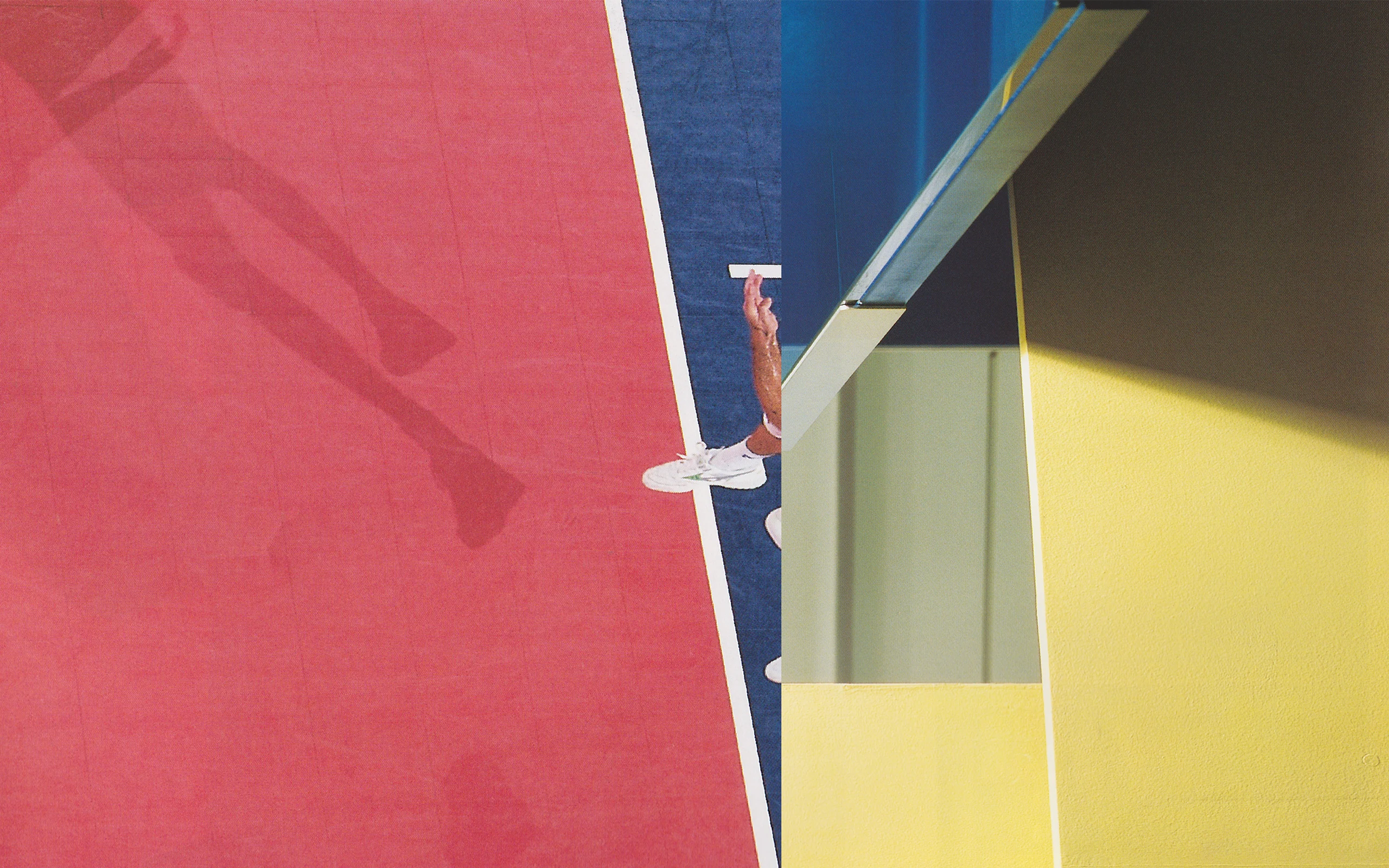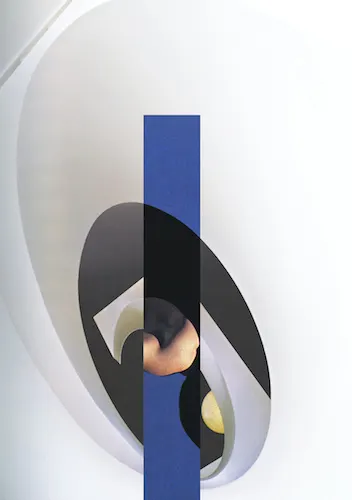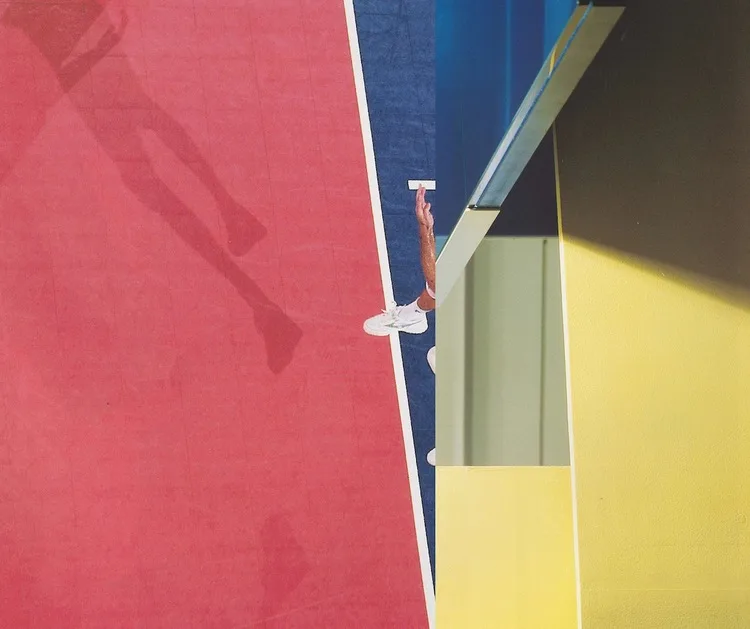

Melbourne-based artist Zoë Croggon makes collages that showcase a seemingly contrasting yet wondrous combination of concrete and movement, buildings and sports, architecture and dance. Zoë makes the two subjects flow naturally into one another, as if there has always been a strong connection between them – we just hadn’t noticed it before.
We caught up with her to discuss her in-depth thought process, her choice of material and the relationship between the human body and its surroundings.
Why do you pair human bodies with architecture?
I’m interested in interrogating conscious and unconscious movement in relation to space. The pairing of bodies and architecture becomes a way of trying to reconcile the distance between self and surrounding. I think the concept of psychogeography has increasing relevance to the reality of living in a predominantly built and artificial environment.

Much of my work considers the effects our geographic environment has on our physical and emotional condition. The work poses the human body simultaneously at odds and in step with its environment. It presents the body both at service to and restricted by its architecture or in symbiotic harmony with it.
There seems to be a contrast between the fluidity of the body and the static nature of architecture – what’s their relationship to one another?
I love the challenge of their opposing substance and form. My work essentially equates body and architecture by coupling them in a precise symmetry. At the crux of this is the malleability of form and the possibility for abstraction. I’m interested in repositioning the formal qualities of familiar objects and figures.

What’s your connection with sports?
Sport has the potential to act as an allegory for failure and success, triumph and defeat. I’m interested in the associative possibility of sport to be a representation of reality, a collective emotional outlet for people. Christopher Lasch in his fantastic book The Culture of Narcissism discusses this. He says that, “by entering imaginatively into their world, we experience in heightened form the pain of defeat and the triumph of persistence in the face of adversity.”
Dance is of particular interest to me as an athletic artform. I studied dance at a young age and find the use of the body as a vehicle for communication very interesting. I think my work takes from this, repositioning the body as an objective and architectonic form.

How do you make the collages and where do you find your material?
I source all my imagery from thrift shops, and generally what I find determines the nature of the work. The work is made through trial and error by folding two photographs together until I think they make an interesting aesthetic and conceptual pair. Each image oscillates between analogue and digital throughout my process; beginning as printed material, being scanned into a digital format and then being reprinted and assembled manually.
What do you exactly look for when pairing the images?
There is an instant when form and content align: image, concept, chaos and precision. It’s when the collage becomes more than the matching of forms or the colliding of body and building, making a third, entirely new image and work in itself.



